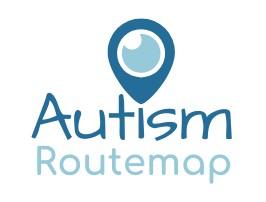The overlooked communication tool that fuels connection

I recall a time when I was seated next to a young couple in a restaurant. Both were glued to their phones. I assumed they must be mid-argument – you know the point where you’ve reached a deadlock, and no-one is speaking? But I was entirely wrong. Every now and again, in between mouthfuls of burger and chips, one would lean over and together they would smile or laugh at something on one of their phones.
It’s no secret that we are a distracted generation. Our attention is constantly drawn to our phones, computers and TV’s. It’s where we find a treasure trove of likes, comments, memes, funny clips and interesting facts which give us little “feel-good” dopamine hits throughout the day.
You would think that all this entertainment would make us the happiest people group in history. But the statistics tell a different story …
The number of people seeking professional help for mental health issues is rising at an alarming rate. According to a 2017 report by the American Psychological Association, there was a 30% rise in students seeking counselling appointments over a 5-year period (2009/10 to 2014/15). This has been a continuing trend affecting youth and adults with things only becoming worse since the onset of COVID-19. 2020 data from Mental Health America, reveals that the number of people seeking help for anxiety and depression has “skyrocketed”.
Now there are many factors which contribute to our mental health. But one of the major “treatments”, besides medication, is talking therapy. We go to counsellors to talk, to be heard and to connect with someone who understands how we feel. This kind of safe listening environment has become so rare in our everyday lives that we will pay people to provide it for us.
Writing in the Harvard Business Review (2016), Melissa Daimler states that listening is an overlooked tool that creates an environment of safety when done well. She goes on to add that “even in a world of limitless, instantaneous, global connection, the most powerful mode of communication is that of two people listening.”
Various authors have described the different levels of listening. We’ve all experienced situations where you tell someone they’re not listening to you – only to have them repeat back, word for word, what you’ve just said. Clearly there are different kinds of listening and listening is not the same as hearing.
Level 1 listening is when we are actually focusing on what we are going to say next rather than tuning in to what the other person is talking about. This is often true when we are in conflict situations or social settings, where we are trying to impress.
Level 2 listening is when we are focused on what the other person is saying. We’re not looking at our phone or continuing to finish off some activity. We’ve stopped and given them our full attention.
Level 3 listening is where the brilliance happens. Here, we listen to understand. We pay attention to everything that the person is saying, and we tune in to their perspective. We hear their words, note their body language, tone of voice and importantly, also consider what isn’t being said.
Level 3 is where we give thought to the underlying reasons for a person’s words. As Diane Schilling, writing for Forbes Women (2012) says, “empathy is the heart and soul of good listening”. The wife who complains that her husband is working too hard may in fact be saying, “I’m lonely”. The husband who responds irritably when asked to fix something at home may really be saying, “I’m overwhelmed at work”. And the teenager who rolls their eyes and ignores you may be communicating, “I’m scared about my Maths test results”.
Effective listening is not only a necessary skill for home and learning environments. Good communication and interpersonal skills are in the top 10 list of qualities sought out by most employers. As you rise up the ladder of seniority and take on responsibility for subordinates, these skills become even more important aspects of the job.
So, in the next post, I’ll continue the discussion about the art of listening empathically – with your intellect and your emotions.
Til then,
Linda Philips
MSc. Human Communication
Autism Routemap supports autistic and neurodiverse people with coaching and training to improve communication, interaction, and emotional regulation skills. Interested in knowing how we can help?
Contact [email protected] or book a free Turning Point call here.

